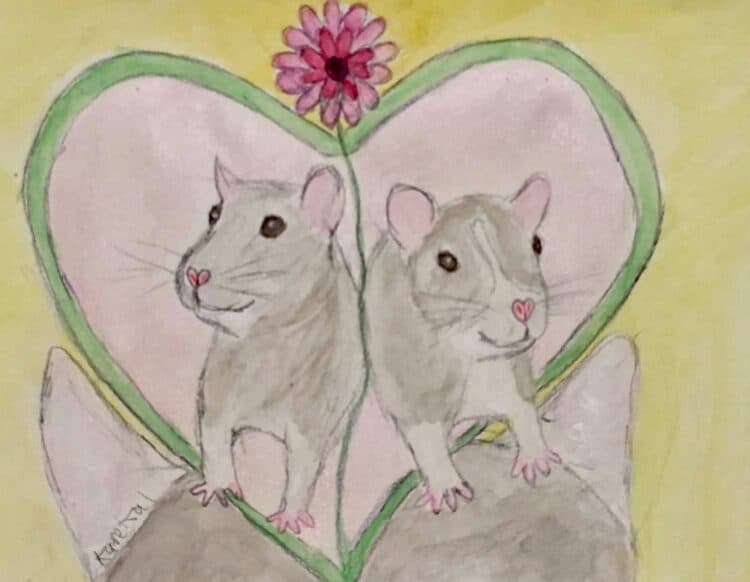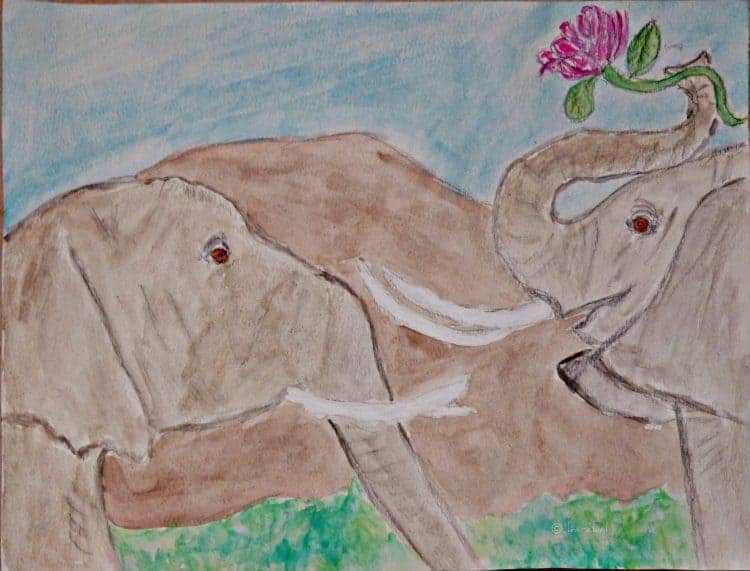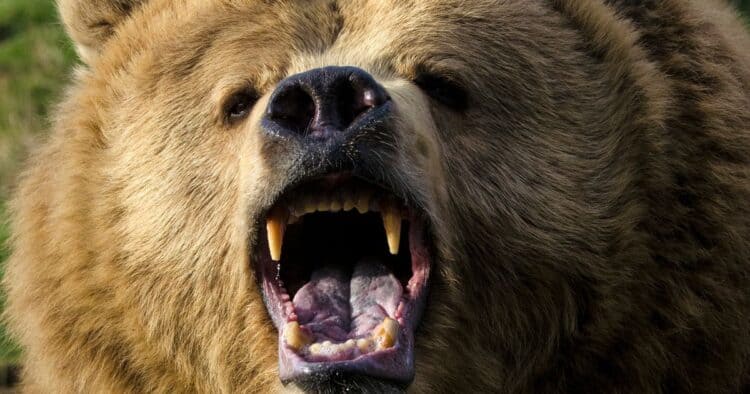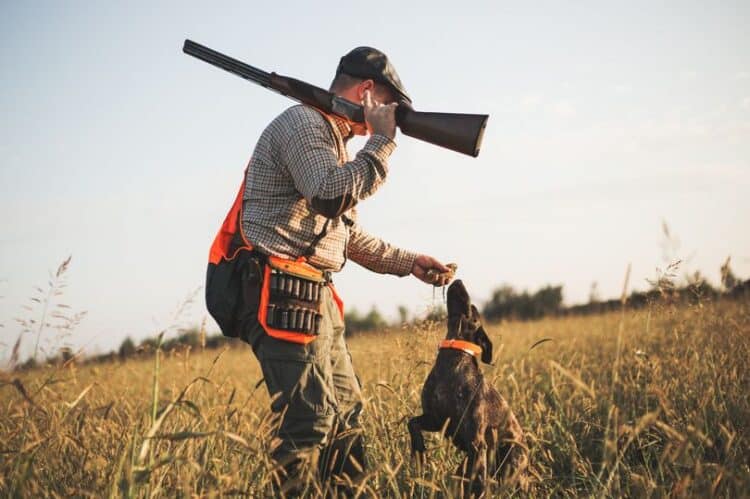We awoke to the sound of a Black Redstart singing from the tiled roofs outside our room, we quickly freshened up and were drinking shots of expresso by 06:15. Minko arrived at 06:30 and we were off. Driving along the wooded gorge we passed through the still sleeping town of Devonish and climbed the slopes above the town.
Our first quick stop was for 2 Chamois that Minko spotted high on a rock outcrop. The stop also produced singing Lesser Whitethroat and Cirl Bunting. We continued our climb before stopping in a pine and spruce dominated woodland near to Lesichevo.
A flock of 6 Crossbill called and sang overhead and a Firecrest showed briefly nearby, singing birds included Cuckoo, Song Thrush, Blackbird, Robin and Dunnock, familiar birds from home but then a distant calling Black Woodpecker showed we were birding in more distant lands.
We took a short walk through the forest looking for our target Hazel Grouse seeing Firecrest, Common Treecreeper, Willow Tit and a flyover Black Woodpecker but no sign of the grouse. Bear poo complete with crushed bone seen along with evidence of foraging Wild Boar. We returned to the car and took a slow drive back towards Devonish adding Jay to the list along the way.
A short stop in Devonish produced a pair of Dipper with two fledged young, this seemed very early for these birds to have fledged chicks and the pair were busy freshening their nest with new material. Overhead were around 40 Pallid Swift, 15 Red-rumped Swallow, 25 Barn Swallow and 30 House Martin while Serin twinkled their song from the treetops.
Dipper action in Devonish. Shots 3 and 4 show the bird capturing and eating a Stone-fly larvae and the prey time can be seen as the bird surfaces. The bottom image is of a juvenile bird already manically dipping at this age. These birds are of the race aquaticus.
We headed back through the gorge towards Trigrad admiring the stunning gorge and the crystal clear waters of the Trigram River. Minho was very excited to see 2 Chamois feeding on the gravel beach’s lining the river and we stopped and watched as they fed on vegetation before heading up the steep cliffs and back into the forest.
We stopped at a viewpoint just before the tunnel located immediately to the south of the ‘Devil’s Throat’ a deep cave said to be the route to the underworld that Orpheus took to rescue Euridice from Hades. The viewpoint was flanked by shear cliff face and just above the road was a small vertical crack where a tuft of moss could be seen, this was a Wallcreeper’s nest.
We waitied and after around 10 minutes Minko and I both heard a distant calling bird. Slowly the bird got closer until the calling was fairly loud, reverberating around the canyon and within a short while Minko spotted the bird on the cliff face above us. And there was my nemesis bird, dipping and flashing its bright crimson wings – a Wallcreeper!
The bird dropped and was now within 15m of us, absolutely stunning, even Sarah let out a ‘wow’! The bird entered the nest and we could see it in the crevice freshening the nest and moving material around and then it was out and flying away along the cliff face.
I followed the bird in my bins as it flitted butterfly like againist the vastness of the limestone cliffs of the gorge.
Chamois feeding along the edge of the Trigrad River, Minko said it was very unusual to see them beside the river as they are usually very high on sheer cliff faces
What can be said! The Wallcreeper is absolutely unique.
We headed back to the hotel for 11:00 for a much needed breakfast stop of scrambled egg, toast and more shots of expresso. After this we headed to the meadows above Yagodina.
It was a little early in the year for the meadow flowers to be blooming but it was clear that there these were flower rich meadows. Fairly quickly we found our main target here, Sombre Tit, which enthusiastically responded to a recording.
This was a surprisingly large tit with a hefty bill, large black bib and a very long (for a tit) tail. Also here were Rock Bunting, Lesser Whitethroat, Stonechat, Green Woodpecker and Serin.
Sombre Tit – Yagodina
Serin – Yagodina
Stonechat of race rubicola – Yagodina
Rock Bunting – Yagodina
Marsh Orchid species – Jagodina
Traditional farming methods still used in Yagodina
The village of Yagodina
Buynovo Gorge below Yagodina
Buynovo Gorge below Yagodina
We then headed back through Devin and back up the road to Lesichevo to try once more for Hazel Grouse. Around the mainly derelict village of there were at least 4 Ring Ouzel of the race alpestris with big white wing panels and scaly flanks. It started to rain and we headed for the woodland but saw little at our first stop.
The next stop was a wide ride that lead for around 1km through woodland to a mammal hide we spent around 1.5 hours here as it was fairly birdy. The rain had encouraged the emergence of Fire Salamander and we saw 5 of these amazing animals.
Birds included our first Crested Tit, calling Grey-headed Woodpecker and 3 fantastic Black Woodpecker but no Hazel Grouse. We headed back to the hotel for much needed cold beer and a fantastic salmon meal.
Ring Ouzel of the race alpestris which has whiter wings and more scaling than the nominate race found in the UK – Lesichevo
Crested Tit of race bureschi – Lesichevo
Cowslip -Lesichevo
Fire Salamander -Lesichevo
Black Woodpecker -Lesichevo
Simon Colenutt
I began birdwatching at the age of nine when living on the Isle of Wight. After obtaining a copy of the Isle of Wight Bird Report from 1976 I realised that Manx Shearwater, Arctic Skua, Pomarine Skua and Black Tern were regularly seen at St.Catherine's Point, only five miles from my home village of Chale Green. To a nine year old these birds were near mythical and so I just had to go and try to see them. Little did I know that these birds were seasonal and after a long winter of seeing nothing I eventually started to bump into other birdwatchers as March drew to a close. It was then that Dave Hunnybun, Dave Wooldridge, Paul Castle, Peter Gandy and Audrey Wilkinson introduced me to the art of seawatching and the joys of bird migration, I have not looked back since.





































Leave a Reply